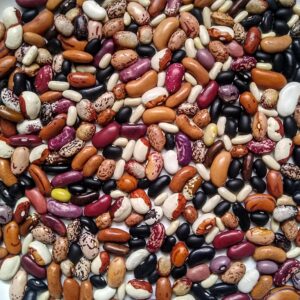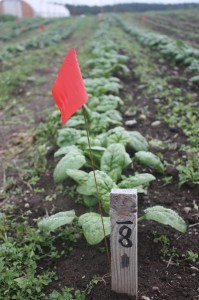
 Recognizing that seed knowledge is being lost even more quickly than genetic diversity, OSA trains farmers in basic on-farm seed saving, crop improvement and plant breeding practices that are grounded in an ecological agricultural approach. The work of OSA goes “beyond conservation” to increase genetic diversity through participatory seed projects with these farmers. Beyond the benefit of increased seed security, these regional networks of farmers also result in improvements in quality of life for farmers and their rural communities. We work with farmers through our Heirlooms of Tomorrow program to breed new varieties and restore older varieties for the needs of organic farming and gardening. These are varieties that do well without synthetic inputs, and that have broad genetic adaptability that allows them to be selected for local environments. They will stand up over time, thrive under organic conditions, and be worked with and handed down by farmers and gardeners for many generations to come as the “heirlooms of tomorrow”.
Recognizing that seed knowledge is being lost even more quickly than genetic diversity, OSA trains farmers in basic on-farm seed saving, crop improvement and plant breeding practices that are grounded in an ecological agricultural approach. The work of OSA goes “beyond conservation” to increase genetic diversity through participatory seed projects with these farmers. Beyond the benefit of increased seed security, these regional networks of farmers also result in improvements in quality of life for farmers and their rural communities. We work with farmers through our Heirlooms of Tomorrow program to breed new varieties and restore older varieties for the needs of organic farming and gardening. These are varieties that do well without synthetic inputs, and that have broad genetic adaptability that allows them to be selected for local environments. They will stand up over time, thrive under organic conditions, and be worked with and handed down by farmers and gardeners for many generations to come as the “heirlooms of tomorrow”.
As part of our Heirlooms of Tomorrow program, OSA has been working for several years on a new spinach variety that we are calling ‘Abundant Bloomsdale.’ This new variety has a vigorous, upright growth habit with deeply savoyed (crinkled), dark green leaves. The dark green color means ‘Abundant Bloomsdale’ is high in carotenoids like lutein and beta-carotene, which are very effective phyto-nutrients that promote good health. Everyone who has tasted the new variety agrees it has a sweet flavor and tender texture.
‘Abundant Bloomsdale’ originated from a cross between the classic open-pollinated (OP) spinach variety, ‘Winter Bloomsdale,’ and a multiple disease resistant variety, ‘Evergreen,’ bred by the late Dr. Teddy Morelock and publicly released by the University of Arkansas in 2005. ‘Winter Bloomsdale’ contributes excellent cold hardiness and great leaf crinkle and flavor, while ‘Evergreen’ is a good source of horizontal resistance to damping off, white rust, and downy mildew. The original cross was accomplished by making a “strain cross” between at least 15 plants of each variety. This technique, often employed by alfalfa breeders, insures the breeder retains maximum genetic diversity from both of the OP parents in the resultant breeding population. This diverse population was grown over the next five years by local farms with the goal of mixing the parental traits into new combinations. The only selection during this period was to eliminate obvious flaws like pale green leaves, poor vigor, and any plants that exhibited disease symptoms.
In the last two years OSA has teamed up with Midori Farm in Port Townsend for a participatory breeding project to select the most desirable ideotype of a vigorous, spring spinach with dark green color, full crinkled leaves, sweet flavor, and good resistance to any endemic diseases in this ‘Abundant Bloomsdale’ breeding population. By selecting repeatedly for good plants in 2011 we were able to identify 130 plants with the desired ideotype from a large plot of over 2000 plants. We then eliminated all other plants to let those 130 plants openly pollinate. As spinach is a dioecious species (half of the plants are male and half female), we then harvested seed from 67 selected female plants into separate, numbered “family” bags.
In 2012 we planted seed of the 60 families with the best seed at Midori farm. This seed was planted into 60 individual “progeny rows” with one row for each family. These progeny rows have then been monitored since they were at the baby leaf stage through to the fully-grown, bunching stage. From these 60 progeny rows at Midori farms in 2012 we have identified five superior families with beautiful upright plants, dark green color, and nicely crinkled leaves. Midori Farm harvested all of the spinach from the remaining 55 rows for market before they flowered and the five selected families are now flowering and openly-pollinating between themselves. Seed will be harvested from each of the five families and will be planted in progeny blocks in 2013, in a similar fashion to our 2012 plots. If the spinach in the field in any combination of these five families matches our desired ideotype then we will harvest the seed and be ready for a limited release of this variety in the fall of 2013 for the 10th anniversary of the founding of Organic Seed Alliance!
